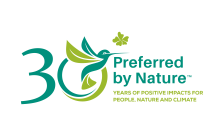Timber Risk Score: 25 / 100 in 2017. The Timber Legality Risk Assessment contains an evaluation of the risk of illegality in Argentina for five categories and 21 sub-categories of law. We found:
-
Specified risk for 14 sub-categories.
- Low risk for 4 sub-categories.
- No legal requirements for 3 sub-categories.
This page provides an overview of the legality risks related to timber produced in Argentina.
The Republic of Argentina has 27 million hectares of forest, which cover about 10% of the country. The forest area has decreased at an average annual rate of 1% between 1990 and 2015 (FAO, 2015).
Natural forests are classified according to the National Law for the Defence Forest Wealth into the following categories:
- Protective
- Permanent
- Experimental
- Special mountains. Harvesting is subject to legal authorisation.
- Production. Harvesting is subject to legal authorisation.
Land tenure is private in almost 90% of the national territory. Natural forests can be found in private and public lands, while plantations are mainly in private properties, except for the Provincia de Neuquén where there is a state corporation managing public plantations.
Argentina produces 10 million tons of wood every year (54% pines, 32% Eucalyptus, 11% Salix, 3% other), this production exceeds the industry capacity (GAIN, 2013). Between 90-95% of wood exports come from forest plantations and the rest from natural forests.
Legality risks are present in timber supply chains in Argentina. The risks appear across all categories of law. If you are sourcing timber from Argentina you should take care to ensure the extensive risks identified are not present in your supply chains, or have been sufficiently mitigated.
There are currently no armed conflicts in Argentina according to the Council on Foreign Relations' Global Conflict Tracker.
FSC Certified Forest Area: 467,055 hectares (4 December 2019)
PEFC Certified Forest Area: 284,765 hectares (31 December 2019).
Information Gathering
Timber sources
- Find out the different sources of legal timber
- Determine which source type your timber comes from
| Timber source type | Description of source type |
|---|---|
|
Timber from natural forests with an Approved Forestry Exploitation permit/plan |
Timber from a natural forest with a permit for selective logging. This license is mainly issued if the forest is located in a 'green or yellow zone', according to the OTBN (Ordenamiento Territorial de Bosques Nativos). A forest harvesting plan is required (general and according to jurisdiction), including:
The specific name for the permit can differ between provinces. |
|
Timber from natural forests with a Land Use Conversion Permit |
Timber from a natural forest that has been converted to another use. This license is issued if the forest is located in a 'green zone', according to the OTBN (Ordenamiento Territorial de Bosques Nativos). The following are required:
|
| Timber from a forest plantation |
Timber from a plantation. The following are required:
Harvesting licenses are not required. |
|
Timber from indigenous lands (in selected provinces) |
Timber from indigenous lands. This is a limited source of timber. Harvesting and land use conversion is allowed only in a portion of the indigneous land. The most important commercial use registered in these areas is non-timber forest products. Permits are required. |
Risk Assessment
Risk assessment summary
|
Legal rights to harvest |
|
Taxes and fees |
|
|
Timber harvesting activities |
|
|
Third parties' rights
|
|
Trade and transport |
|
Specified risk species
| Common/trade name | Scientific name | Risk information |
|---|---|---|
|
Palo Santo |
Bulnesia sarmientoi |
CITES-listed |
Risk Mitigation
Mitigate the risks in your supply chain
Learn which actions we recommended to mitigate the risks associated with the timber sources from Argentina.
Source Certified Materials
NEPCon believes that third party certification (for example FSC and PEFC certification) can provide strong assurances of the legality of the products they cover. Companies seeking to mitigate the risks of sourcing illegal timber should seek to purchase third party certified materials wherever possible.
While the European Timber Regulation does not include an automatic “green lane” for certified products, it does recognise the value of certification as a tool for risk assessment and mitigation. The European Commission says that companies “may rate credibly certified products as having negligible risk of being illegal, i.e. suitable for placing on the market with no further risk mitigation measures, provided that the rest of the information gathered and the replies to the risk assessment questions do not contradict such a conclusion.”
For more information on using certified materials in your due diligence, including how to assess whether a certification system meets EUTR requirements, see the page on Certification and Due Diligence.
Mitigation recommendations
There are five recommended actions to mitigate the risks associated with timber sources from Argentina:
1. Fully map your supply chain
- Our supply chain mapping tool can help you do this.
2. Obtain and verify documents
- Forest level documents
- Land registry
- Valid business registration
- Original document or Notary Certified Copy of Property Titles or similar
- Legal agreements with notary intervention for usufructuary rights, Real Rights of Land, third party harvesting contracts and similar
- Applicable harvesting permit. The names of which vary according to province; e.g.; Approved Forestry Exploitation permit/plan, Land use Conversion Permit, Forest Plan
- Sustainable Forest Management Plans for natural forests
- Harvesting Plan of land use Conversion, approved by the authorities (natural forests)
- Forest plan approved by competent authorities (plantations)
- Maps showing harvesting, protection, and communal areas, forest roads, intermediate collecting yards
- Forest inventories
- Environmental Impact Assessment
- Tax related documents
- Payment receipts for taxes and harvesting fees
- Sale documents shall include the VAT
- Receipt for payment of profits payment together with AFIP Form 711
- Receipt for payment of Minimum Alleged Profit
- Receipt for payment of Gross Income in each province
- Employment related documents
- Formal employment contracts
- Documents related to third parties
- Records of free, prior and informed consent (previous consultation)
- Reports on evictions of natural communities
- Legal and correctly designed waybills (natural forest)
- Correctly designed packing slip (plantations)
- Transport and trade documents
- Natural forest: Waybill (Guía Forestal)
- Plantations: Timber packing slip (Remito de madera)
- Sales invoice (Factura de venta) with information linking it to the waybill(s) or packing slips, as applicable
- Require audit report for transfer pricing
- Loading permit (Permiso de embarque)
- Shipping permit (Permiso de embarque)
- Bill of lading (Listado de empaque)
- Phytosanitary Certificate (Certificado fitosanitario)
- Certificate of Origin (Certificado de origen)
- Packing List (Listado de carga de embarque)
- Export invoice linking the shipment with the statement in the Packing List (Factura de exportación que vincule la carga con la declaración del Packing List)
- Export Licence of CITES species (Licencia de exportación de especies CITES)
3. Consult with appropriate stakeholders
- Neighbours, local communities and others confirm that land tenure rights are clear. Note: The names of the appropriate people to consult vary by community, and include Community Center, the Aboriginal Council, Elders Council, Chief (Cacique)
- Fiscal authorities of the province where the goods originated confirm that all taxes on revenues and profits have been paid
- Provincial forests authorities from where the wood was sourced confirm conformance with harvesting regulations
- Competent provincial authorities or provincial delegations confirm:
- If the project has any pending environmental disqualifications or penalties
- Validity of permit
- The state of transfer prices reports and establishment of offshore associations of the seller
- Forest level staff confirm that they are trained to carry out required work tasks
- Forest level staff confirm that they have certified skills for the work they do and undergo periodic exams performed by ART professionals as required by law
- Forest level staff confirm that they are aware of labour risks and of health and safety measures at work
- Forest level staff confirm that they receive minimum wage stated in the Collective Agreement
- Forest level staff confirm that they are above the minimum working age
- Forest level staff confirm that they have mandatory insurance cover
- Forest level staff confirm that they receive safety equipment required by law, as well as training courses on health and safety at work
- Forest level staff confirm that they have lodging, transportation, food that complies with all legal requirements
- Forest level staff confirm that they are not being forced to sign papers declaring false labour conditions, and have not been denied their freedom to collectively bargain with their employer
4. Carry out on-site verification
- Confirm that harvesting takes place within property limits and maps correspond to reality
- Confirm that contractors have a Timber Extraction Contract
- Confirm that data regarding area, species and volumes, as well as the rest of information included in the harvesting permit are correct
- Confirm that harvesting regulations are respected
- Confirm that harvesting does not take place where law prohibitions or specific provisions from sector authorities exist
- Confirm that selected tree species within the FMU are not harvested
- Confirm that on-site environmental restrictions are fulfilled, such as the requirements related to soil damages, buffer zones, seed trees, seasonal limitations in the rainy season, etc.
- Confirm that a hazardous residues management plan is implemented
- Confirm that all safety and health regulations areimplemented and all necessary safety equipment for a specific activity is provided and used
5. Conduct targeted timber testing
- Conduct timber testing on samples of purchasd material to verify the species or origin of timber, where appropriate












